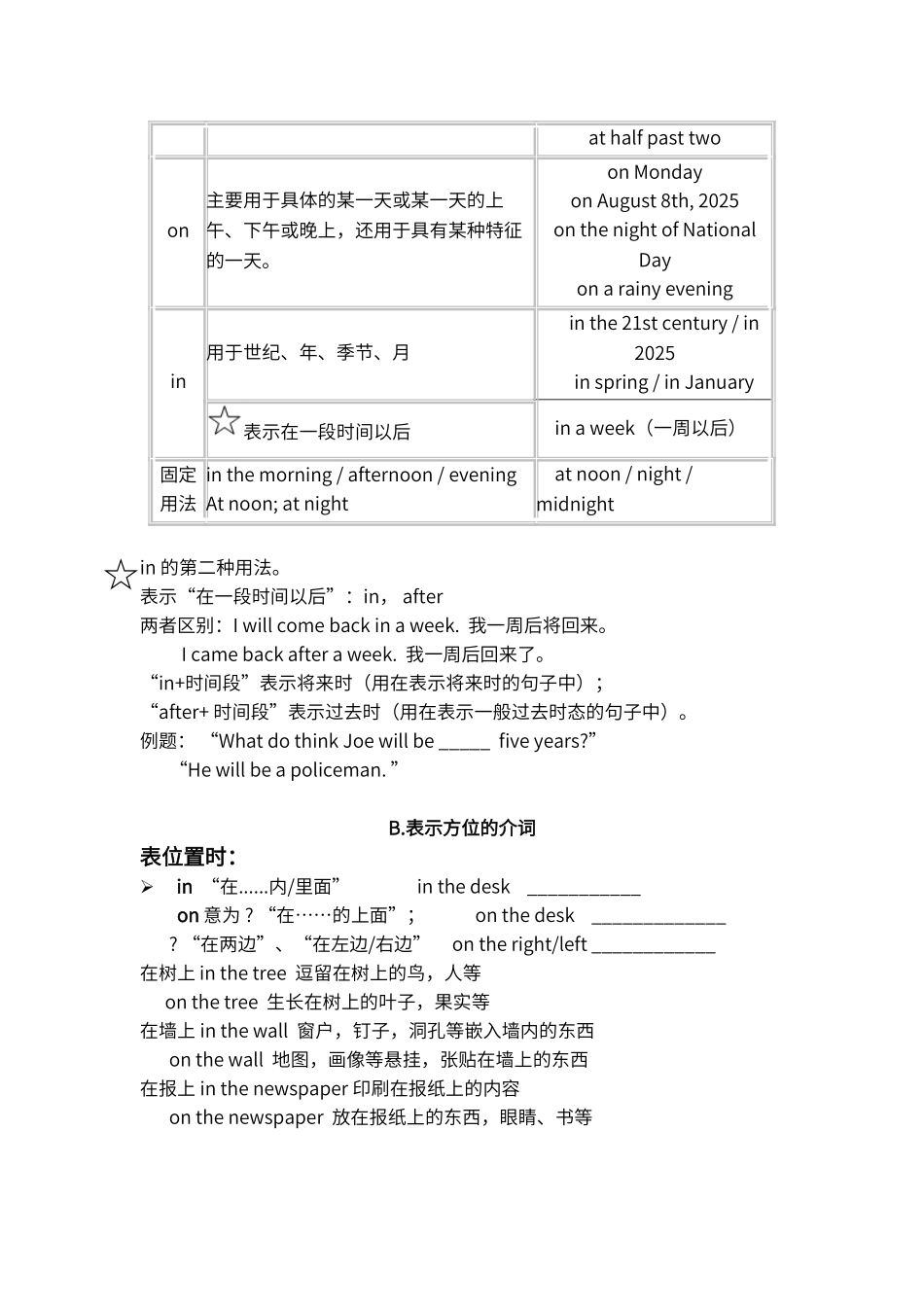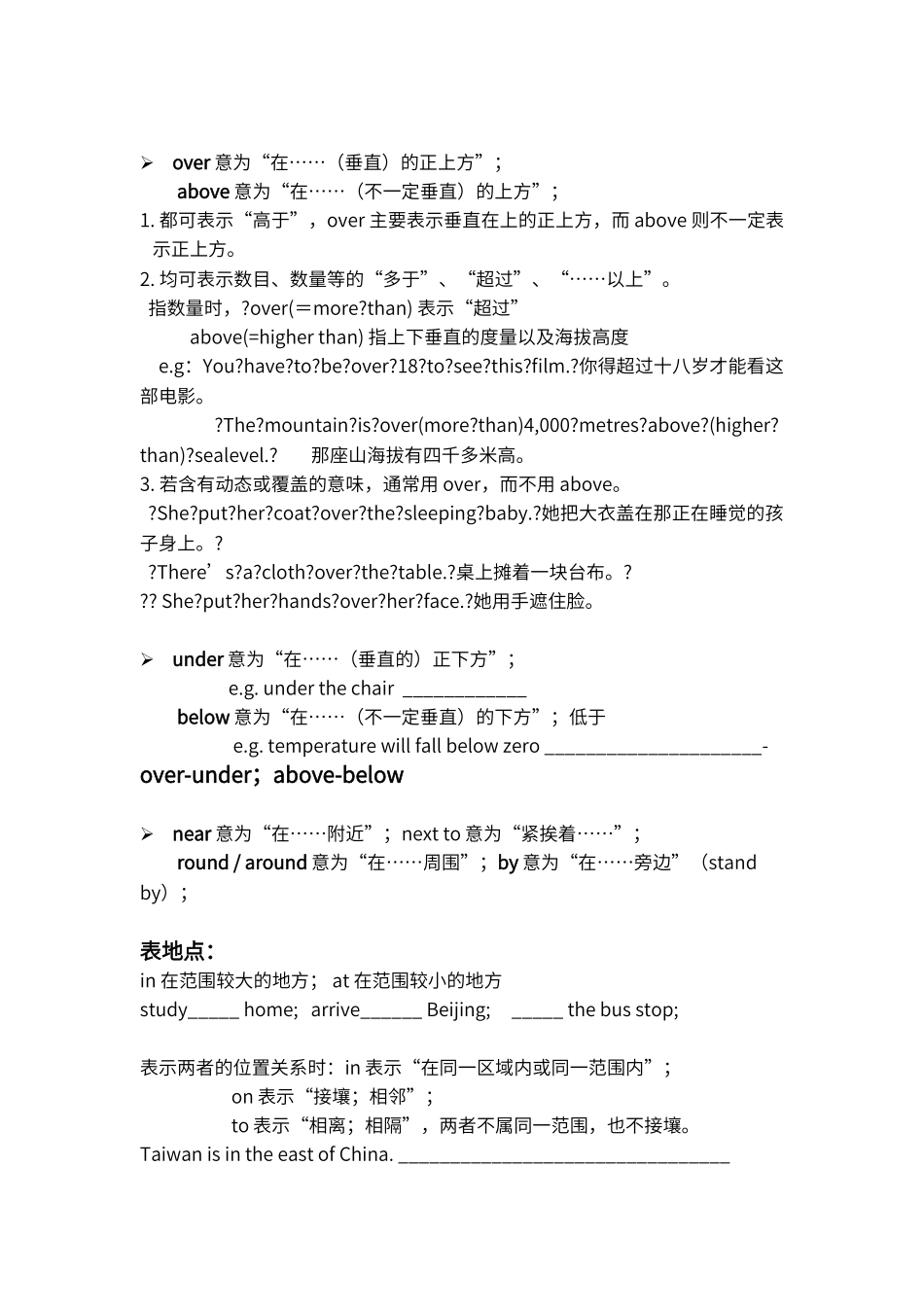介词讲解 课标要求了解及掌握介词的基本用法,能够辨别介词词组的意义与区别,并且,要求学生可以在具体的语言环境中准确运用介词的用法。一,考纲要求1. 掌握常见介词的基本用法,如表示时间,方位,方式的介词的基本用法 2.介词构成短语的意义,用法,及意义的区别。2. 命题趋势:介词的基本用法中的表示时间的介词;介词短语的固定搭配在选择题,完型题中的考查。二,考点表示时间,地点及方式的介词基本用法;基本固定介词短语的用法,及易混词组的区分。三,介词知识精讲1. 概念 介词(虚词),不能在句子中独立充当成分。它总是用于名词、代词、或相当于名词的其它词类 或短语活从句前。 中考需要掌握的 11 个介词:in、on、at、to、from、by、with、for、about、after、before 表示时间的介词。2. 介词的句法功能A、作定语:The book on the table is mine.B、作状语:We have breakfast at seven.(表时间); They were late for meeting because of the heavy rain(表原因); They started the machine by pressing the button.(表方法)C、作表语:My dictionary is in the bag.D、作宾语补足语:I found him in the office.3.介词基本用法A.表示时间的介词in 表示年、季节、月份、周,或泛指上午、下午或晚上;on 表示某一天,某一天的上午、下午或晚上;at 表示某一时刻或时间上的某一点。??at表示具体“钟点”时间at seven o'clockat half past twoon主要用于具体的某一天或某一天的上午、下午或晚上,还用于具有某种特征的一天。on Mondayon August 8th, 2025on the night of National Dayon a rainy eveningin用于世纪、年、季节、月in the 21st century / in 2025in spring / in January表示在一段时间以后in a week(一周以后)固定用法in the morning / afternoon / eveningAt noon; at nightat noon / night / midnightin 的第二种用法。表示“在一段时间以后”:in, after 两者区别:I will come back in a week. 我一周后将回来。 I came back after a week. 我一周后回来了。“in+时间段”表示将来时(用在表示将来时的句子中);“after+ 时间段”表示过去时(用在表示一般过去时态的句子中)。例题: “What do think Joe will be _____ five years?” “He will be a policeman....


